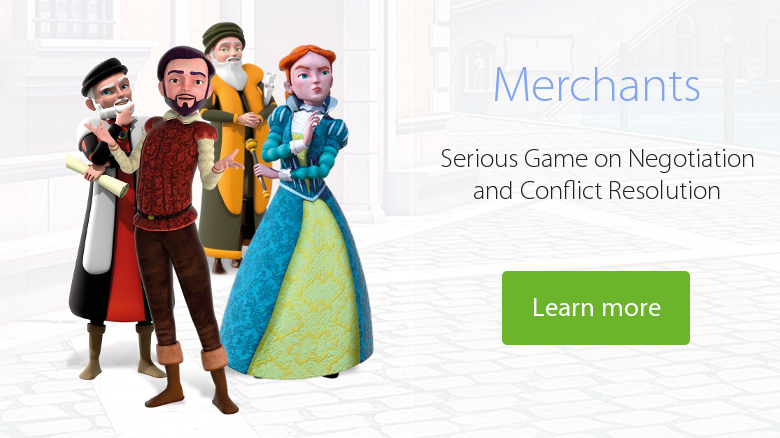When in one of my classes I claim that “selling is transmitting”, the listener tends to equate the word “transmit” with the transfer of a product or service from the seller to the buyer. Some of my students didn’t understand its real meaning until they played at selling.
Any sales trainer will define selling as the process whereby we identify and satisfy our customer’s needs by explaining and demonstrating the benefits of our product or service.
We talk about the benefits rather than the advantages of our product. But it is actually the advantages of our product that will be perceived as benefits by the buyer. Not all the supposed advantages of a product are a motivation to buy. For example, a grandfather is unlikely to care much about whether he can take panoramic photos with his iPhone X, when maybe all he wants is to use it to make calls, and for the number keys to be nice and big.
Selling before negotiating with the customers
Negotiating is the process whereby two or more people seek to reach an agreement on a specific issue, starting from conflicting interests and involving compromises by each side until they can reach an agreement that is beneficial to all.
Sales negotiations, if there are any, will always come after the selling process. The customer must first accept that our product or service meets their needs. What’s the use of talking about the price of our product if the customer shows no interest in it? Negotiation will only be necessary if there are still opposing interests after the product is sold.
Selling is transmitting
Emotion is the first side of selling, and the most difficult challenge. If we can achieve it, we’ll be far nearer to closing the transaction. During a sales interview we’re not just exchanging information but also values. To begin with, a lot will depend on the customer’s relationship with the seller, whether the customer reacts favorably to the seller’s presence, and on the understanding between them, on trust, respect, and much more. All this is also sold and transmitted. And we do so through dialog, gestures and body language (personal impact).
We sell emotions, we transmit values
In a process of selling identical products it is the sellers who make the difference, because they have the ability to sell their own and the company’s image as well as the product or service. In this interaction, the seller influences other people through the exchange of ideas, feelings and reactions. In second place, it will depend on how the information is transmitted. A product is not sold for what it is, but for what it can do for the customer: because of its usefulness to them, how it can help them in their work, the satisfaction it brings them, the problem it avoids, etc.
It’s not about using solid and rational arguments to convince the customers how good our product is, it’s about persuading them, of making them feel, appealing to their emotions, getting them to perceive the attributes of the product that represent benefits for them, attributes they consider will satisfy their needs. A message is persuasive if it mobilizes emotions that are capable of transforming an attitude. That’s why we don’t negotiate until we’ve sold. Selling doesn’t involve simply signing a contract, but capturing the customer’s emotional side and their desire to buy from us.
Once the decision has been made to buy, multiple rational factors come into play: price, form of payment, quantities, delivery times and more. This is the second side of the sale, the rational one. Sometimes there’s no need to negotiate because there are common interests, so the transaction is accepted and the contract signed. Others require negotiation. And we can’t afford to lower our guard – we haven’t closed the deal yet.
Closing the deal also requires specific negotiating skills to reach a compromise, always using a win-win rather than a competitive approach. The negotiation shouldn’t become an imposition, but rather a process of exchange (we continue transmitting) in which each side has something to offer and in which the transfer produces benefits for each one. For example, we can negotiate lower economic conditions than the original proposal in exchange for the option of paying when the product is delivered rather than three months later. I give a little, you give a little. I win, you win. Any competition to win to the detriment of the other can mean the kiss of death for closing the final deal.
These are the two sides of selling, the emotional and the rational side. A customer’s attitude of acceptance or rejection towards the purchase will be conditioned by our ability to transmit during the sale. The end result is the transfer of products and services, but values and emotions are transmitted beforehand.


